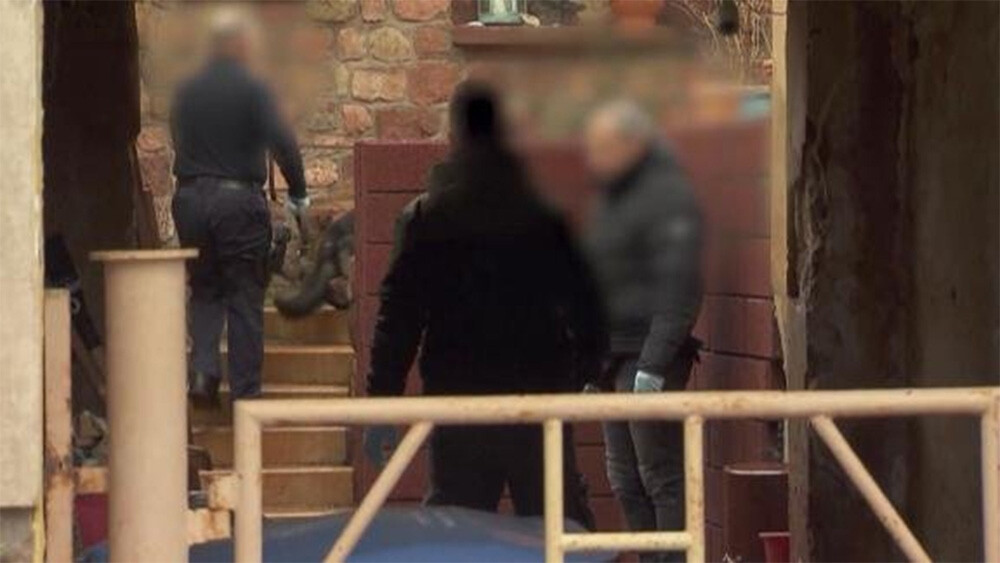5 ‘Saw’-Style Traps That Psychos Built in Real Life

A lot of our readers who are serial killers favor such weapons as chainsaws or knife fingers, but let us not forget the power of booby traps.
Booby traps, which have nothing to do with boobies, by the way, but are named for a Spanish word for “stupid,” can be delightfully dangerous. You don’t even need to be present for them to maim your enemies. In fact, you don’t even need to still be alive.
The Wheelchair Shotgun
In 2018, Oregon man Gregory Rodvelt lost a lawsuit and learned he was about to lose his home. He was 71 years old and decided that if they wanted him out, they were going to have to drag him out. Then, when he learned they were about to do just that, he filled the property with a series of traps. The custodians who arrived to check the house out found themselves stepping on spikes, so they reported the threat. Clearly, this was a job for the FBI’s bomb squad.
Don't Miss
FBI officers came and managed to circumvent the first obstacle — a series of animal traps at the gate. They smartly avoided opening the garage door, which would have fired a pellet at whoever tried. They steered clear of one trap terrifying in its grandiosity: Rodvelt had stood a circular hot tub on its edge and hooked it up to a tripwire, so it would roll over a trespasser.

But they didn’t spot the wheelchair shotgun. Yes, the wheelchair shotgun, a .410-guage firearm hidden in a chair and hooked up to fishing line. It fired and got an agent in the leg.
Rodvelt received 12 years in prison, once they found him. Had the shotgun killed the agent, he would have surely got a harsher sentence than that, but when you’re that old, it’s probably going to be a life sentence either way.
Cemetery Torpedoes, to Kill Grave Robbers
In the 1800s, any corpse you buried stood a chance of being dug up and stolen. Doctors wanted to cut up cadavers, and no one had yet figured out a proper system of doing that, so criminals known as resurrectionists would rob corpses from fresh graves and sell them to science.
The public became especially aware of this issue in 1878, when the son of President William Henry Harrison was dug up and was later found in a chop shop, surrounded by assorted body parts. In response to this, inventor Philip K. Clover came up with a device he called the coffin torpedo.

This pipe contained gunpowder and metal balls. Place that at one end of the coffin, and place the tripwire in the corpse’s hands, and any graverobber who violated this sanctuary stood a chance of a face full of lead.
In at least one case, in 1881, a coffin torpedo did kill someone. It broke one robber’s leg and killed the other, a man known as Dipper. We assume Dipper ended up buried in the very same cemetery, where he served as bait for the next doomed band of thieves.
The Dead Gardener’s Revenge
Bernhard Graumann, from Germany, was diagnosed with pancreatic cancer in 2019, and he figured he’d go out on his own terms. These terms included not only killing himself with poison but also murdering a series of innocent people after he died.
Graumann was a gardener by trade but a historical reenactor in his spare time, so he had a little experience with explosives. And so, he stuffed some explosives in a log of wood and placed it in the lumber pile of one of his clients. The log blew up, injuring the woman and her four-year-old daughter. Police now investigated and chased down his various contacts, so they managed to locate and disarm a second log-bomb, in a client’s parking space.

A third bomb got its target. This was Graumann’s doctor, Jörn Klinger, who picked up a package at his doorstep. It exploded, killing him. Listen — a cancer diagnosis might make you feel like you’ve been wronged, but your doctor is likely not the enemy here.
Tree Spiking, the Lumberjack Killer
A log, we just learned, can make for a dangerous trap, if the victim plops it into a stove without realizing it contains explosives. An alternative tactic makes logs dangerous for whoever saws into them. You drive a spike into a tree, while it’s still upright and alive. The tree goes on growing and feels no pain (as far as we know). If a logger now comes and sinks a chainsaw in at just the right spot, the saw will get knocked out of service — and also might get knocked into the logger’s torso.

This tactic was popular with ecoterrorists in the 1980s, back when saving forests was their big pet project. The idea here was that spikes could temporarily halt logging operations but could also deter loggers from targeting trees altogether.
Tree spiking did not, in fact, deter anyone, so this was retribution to no one’s benefit.

If the chainsaw didn’t hit the trunk at just that right spot, the tree would come down with the spike embedded in it. From this point on, it presented a danger to even more innocent targets.
In May 1987, a mill worker named George Alexander ran a log toward a saw on a conveyor belt as part of his job. The log contained a spike, and the saw blade exploded. Half of it flew into his face. He wore a face shield and a helmet, but it tore right through those and cut his jaw in half.
The Cannabis Decapitation
Daniel Ricketts installed traps around his property in 2013 for the most relatable of reasons: to stop trespassers. Police would later note that these traps’ unlabeled nature meant they wouldn’t deter any trespassers, just maim or kill them. Also, police would note that the property he was protecting was his marijuana farm. They noted all this after finding Ricketts’ dead body.
The traps he laid down included simple animal ones that would ensnare someone’s leg. He also stretched out piano wire, horizontal and nearly invisible. This particular trap would only injure someone who came at it at a very high speed, in a vehicle that left their neck vulnerable. Say, if someone drove straight at it on a motorcycle.

Fabio Spinelli
No one did drive at those wires on a motorcycle, but someone did on an ATV. That someone was Ricketts himself, who apparently forgot about the trap because he may or may not have been drunk at the time. The wire sliced right through his neck and killed him.
Maybe that Spanish stupid origin for “booby” trap makes some sense after all.
Follow Ryan Menezes on Twitter for more stuff no one should see.